Explore Luxor - Egypt Travel, Africa
Luxor, recognized as the "world's greatest open-air museum," is a must-see destination for history fans and adventurers alike. Nestled on the east bank of the Nile River, Luxor is home to some of the most extraordinary ancient monuments in the world. From towering temples to awe-inspiring tombs, the city offers a glimpse into the grandeur of Ancient Egypt. Luxor isn't just about its historical allure, though; it's a vibrant city where modern life and ancient wonders coexist. Let's dive deep into everything you need to know for a memorable visit to this magnificent city.
Population: Approximately 1.4 million in 2020.
Economy: Luxor's economy is driven by tourism, based on its rich archaeological heritage and historical sites. Agriculture and local crafts also contribute, but tourism remains the primary economic driver.
Landmarks: Famous for the Karnak Temple Complex, Luxor Temple, and the Valley of the Kings.
Egypt
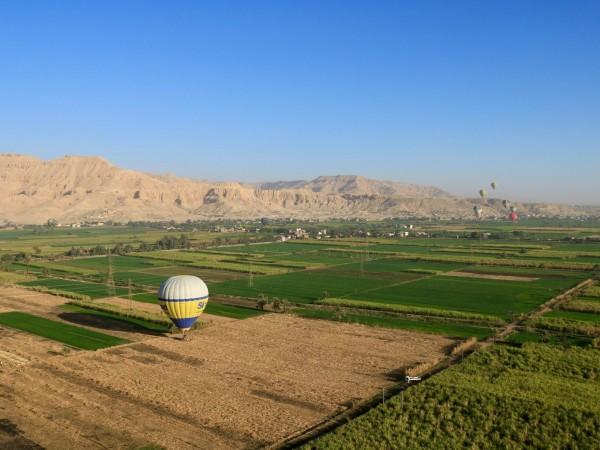
Overview of Luxor
History & Cultural Influence
Luxor is steeped in history, and it’s easy to see why it’s considered one of the world’s greatest archaeological sites. Formerly known as Thebes, it was Egypt's booming capital under the New Kingdom (1550-1069 BC). For centuries, it was the center of power, culture, and religion for the ancient Egyptians. Today, the city stands as a testament to its glorious past, with impressive temples, tombs, and monuments scattered across both the East and West Banks of the Nile. Visitors can walk in the footsteps of the Pharaohs at sites like the Karnak Temple Complex, or explore the Valley of the Kings. Every corner of Luxor is imbued with history, offering travelers a unique opportunity to witness the grandeur of a civilization that shaped the world.
Interaction with the Locals
The residents of Luxor are known for their warm hospitality and strong connection to their ancient history. Many locals work in tourism, agriculture, and crafts, with traditional industries like alabaster carving and papyrus making still prevalent. Luxor's citizens are predominantly Muslim, and their daily lives are shaped by both modern Egyptian customs and centuries-old traditions. Visitors will find the people of Luxor friendly, welcoming, and eager to share their city’s history and culture.
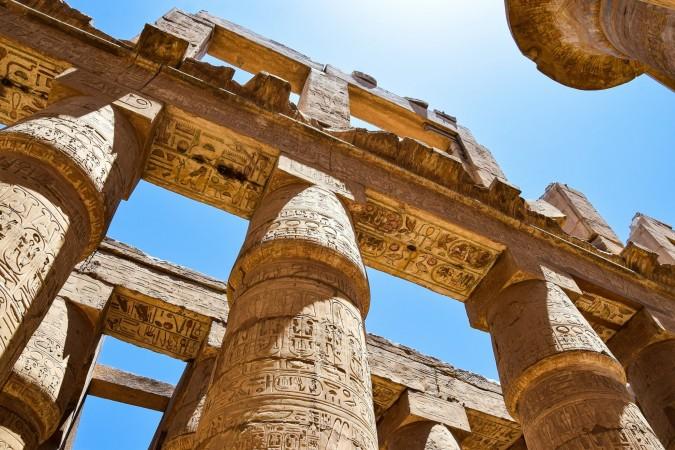
Inside Karnak Temple Complex - © AXP Photography
Top Attractions in Luxor
Karnak Temple Complex
The Karnak Temple Complex is one of the most impressive and expansive temple sites in the world, stretching over 100 hectares. Dedicated primarily to the god Amun-Ra, this sacred complex took over 2,000 years to complete and showcases the architectural prowess of numerous Pharaohs, including Ramses II and Hatshepsut. The Hypostyle Hall is the most notable portion, with 134 huge columns placed in 16 rows, some of which reach heights of 24 meters. The size, scale, and intricacy of the carvings on the walls and columns leave visitors awestruck.
Luxor Temple
Unlike Karnak, which was devoted to a god, Luxor Temple is considered to represent the renewal of royalty. Constructed by Amenhotep III and expanded by Ramses II, it served as the backdrop for the Opet Festival, where statues of gods were paraded down the Nile to Karnak. The colossal statues of Ramses II that stand guard at the entrance set the stage for the grandeur inside, where visitors can explore beautifully preserved carvings that depict important events and religious rituals.
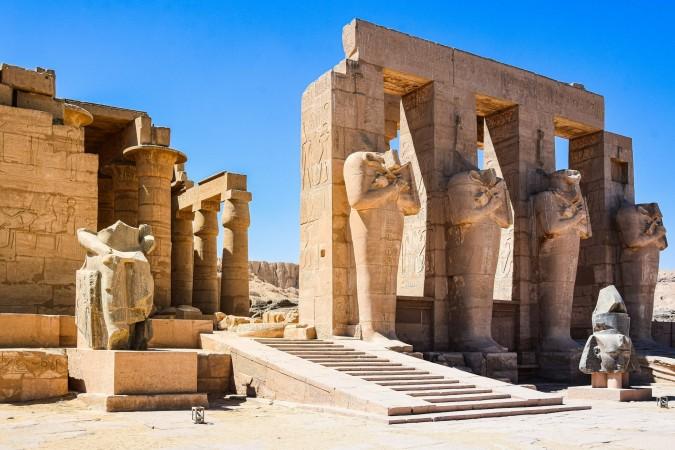
Karnak Temple Complex - © AXP Photography
Valley of the Kings
The Valley of the Kings is one of Egypt's most famous and historical monuments. Located on the West Bank of the Nile, this desert valley is where ancient Egyptian pharaohs and nobles were buried, their tombs carved deep into the limestone hills. Visitors can enter several of these tombs, which are adorned with intricate hieroglyphs and murals depicting scenes from the Book of the Dead. The tomb of Tutankhamun, discovered by Howard Carter in 1922, is the most famous, though many other tombs are equally mesmerizing for their vivid wall paintings.
Hatshepsut’s Temple (Deir el-Bahari)
The Temple of Hatshepsut, located at Deir el-Bahari, is one of the most striking monuments in Egypt due to its unique design and location. Built into the cliffs of the Theban Mountains, this mortuary temple honors Queen Hatshepsut, one of Egypt’s most successful and powerful female pharaohs. Inside, visitors can find beautifully carved reliefs that tell the story of Hatshepsut’s divine birth and her expedition to the land of Punt, which was a prosperous trade journey.
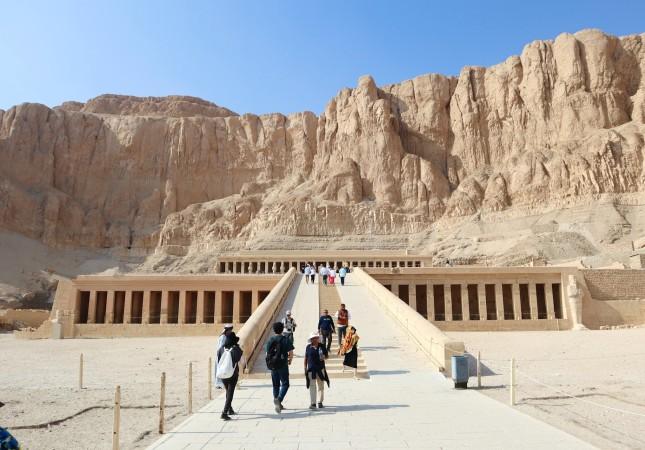
Temple of Hatshepsut - © Dilip Poddar
Must-Try Dishes in Luxor
Exploring Luxor’s local dishes allows visitors to savor the diverse flavors of Egyptian cuisine, with each meal offering a connection to the region’s rich history and culture.
- Koshari: A national favorite, koshari combines layers of rice, lentils, macaroni, and chickpeas, topped with spiced tomato sauce, garlic vinegar, and fried onions. This hearty street food is both satisfying and flavorful.
- Ful Medames: A simple yet iconic dish made of slow-cooked fava beans, ful medames is traditionally served with olive oil, garlic, and lemon juice, often enjoyed with Egyptian flatbread for breakfast or lunch.
- Molokhia: A uniquely Egyptian dish, molokhia is a soup made from finely chopped jute leaves cooked with garlic and coriander. It's served with rice and meat, such as chicken or rabbit, creating a savory and nutritious meal.
- Fiteer Meshaltet: Known as Egyptian layered pastry, fiteer is a deliciously flaky dough that can be served with sweet toppings like honey and powdered sugar or savory fillings such as cheese, meat, or vegetables.
- Kofta: Egyptian kofta is made from minced meat (usually lamb or beef), mixed with spices, herbs, and onions, then grilled to perfection. It's often served with rice, tahini sauce, or in flatbreads as part of a mezze spread.
- Konafa: A popular dessert in Egypt, konafa is made of thin strands of shredded pastry dough layered with nuts, cheese, or cream, soaked in a sweet sugar syrup. It’s often enjoyed during Ramadan and special occasions.
- Basbousa: Another beloved Egyptian dessert, basbousa is a semolina cake soaked in syrup and often garnished with coconut or almonds. It’s light, sweet, and pairs perfectly with a cup of Egyptian tea.

Ful Medames - © The Washington Post
Festivals & Local Celebrations
Luxor is home to a variety of vibrant festivals that reflect its ancient roots and blend of religious and cultural traditions. These celebrations provide a glimpse into the local community’s spirit, with many events combining both modern practices and ancient customs.
Abu El-Haggag Moulid
This festival honors Sheikh Abu El-Haggag, a revered Sufi saint whose mosque stands near Luxor Temple. The celebration includes vibrant parades, traditional music, and whirling dervishes performing Sufi rituals. A highlight of the festival is the colorful boat procession, which reflects ancient Egyptian customs of honoring the Nile. Locals build small wooden boats that they carry through the streets, paying homage to the city's connection to the river. The festival lasts for several days and offers visitors a unique mix of Pharaonic and Islamic traditions.
Sham El-Nessim
Sham El-Nessim, observed on the Monday after Coptic Easter, honors the arrival of spring and dates back to Pharaonic times. Locals celebrate by spending the day outdoors, having picnics, and enjoying traditional foods like feseekh (salted fish), eggs, and green onions. The festival’s name translates to "smelling the breeze," symbolizing the fresh air and new beginnings of the season. It’s a day for families to gather in public parks and along the Nile, and visitors are welcome to join in this nationwide event.
Wafaa El-Nil
This ancient festival dates back to the Pharaonic period and celebrates the life-giving powers of the Nile River. Held in August, the event honors the river’s role in sustaining agriculture and daily life in Egypt. While the festival is less prominent today, certain rituals still take place, including offering flowers and symbolic gifts to the Nile. Luxor’s connection to the Nile is an essential part of its identity, and this festival reflects the reverence Egyptians have for the river.
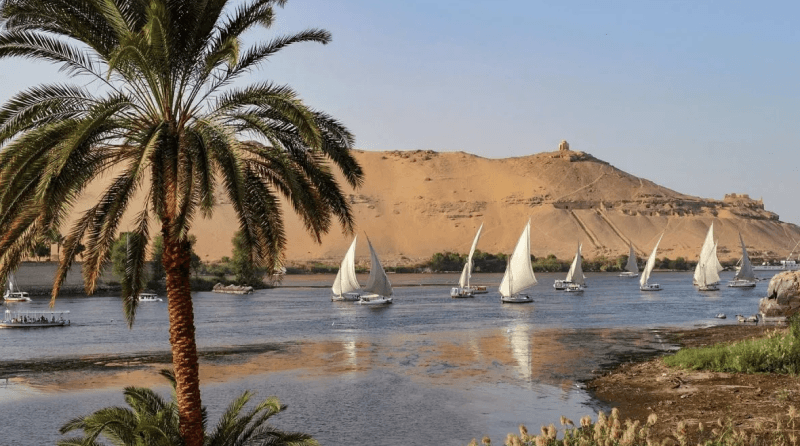
Ships celebrating Wafaa El-Nil festival - © CSA Reviving Community
What to Do in Luxor
- Hot Air Balloon Rides: One of the most popular activities in Luxor is taking a sunrise hot air balloon ride over the West Bank. The aerial view offers breathtaking vistas of the temples, tombs, and the vast desert landscape, providing a unique perspective on the region’s ancient wonders.
- Nile Cruises: A cruise along the Nile is a quintessential Luxor experience. Whether on a traditional felucca or a luxury cruise boat, travelers can explore the Nile’s serene waters while enjoying views of the lush riverbanks and historical landmarks.
- Temple and Tomb Tours: Luxor is famed for its incredible temples and tombs, and guided tours of sites like the Valley of the Kings, Karnak Temple, and Luxor Temple are a must for any visitor. Professional guides offer valuable insights into the history and significance of each site.
- Horseback Riding and Camel Rides: For a different way to explore Luxor’s landscapes, consider taking a camel or horseback ride. Local guides lead visitors through the scenic desert, providing a more intimate connection with the surroundings.
- Visit the Luxor Museum: The Luxor Museum offers a quieter, more curated exploration of the region’s history, featuring well-preserved artifacts from the Pharaonic and Greco-Roman periods. It's a great complement to the larger outdoor sites.
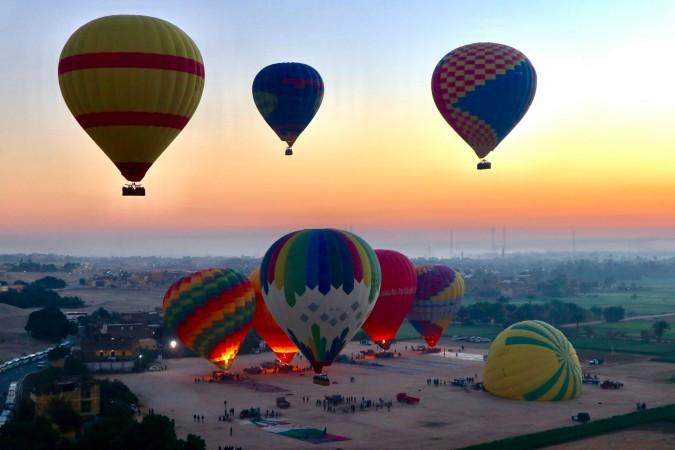
Hot Air Balloon Rides - © Wendy Morris
Shopping in Luxor
Where to Buy in Luxor
- Luxor Souq: The city’s main market, Luxor Souq, is an energetic bazaar filled with vendors selling everything from spices and perfumes to jewelry and handmade crafts. Bargaining is expected, so don’t hesitate to haggle for the best price.
- Alabaster Workshops: Luxor is famous for its alabaster crafts. Visiting an alabaster workshop gives tourists the opportunity to see skilled artisans carve this soft stone into beautiful vases, statues, and other decorative items. These handcrafted pieces make for unique souvenirs.
- Papyrus Shops: Luxor is a great place to purchase authentic papyrus art. Many shops offer demonstrations on how papyrus is made from the papyrus plant, just as it was in ancient Egypt. Visitors can buy scrolls with beautiful Egyptian motifs to take home.
What to Buy in Luxor
- Traditional Jewelry: For those looking for a more personal keepsake, local jewelers sell handcrafted silver and gold pieces that are often inspired by ancient Egyptian designs. Scarab amulets, cartouches, and hieroglyphic-engraved pendants are popular choices.
- Spices and Perfumes: Luxor’s markets are brimming with the rich aromas of Egyptian spices. Visitors can buy high-quality saffron, cumin, and other spices, along with locally made perfumes that capture the essence of Egypt.
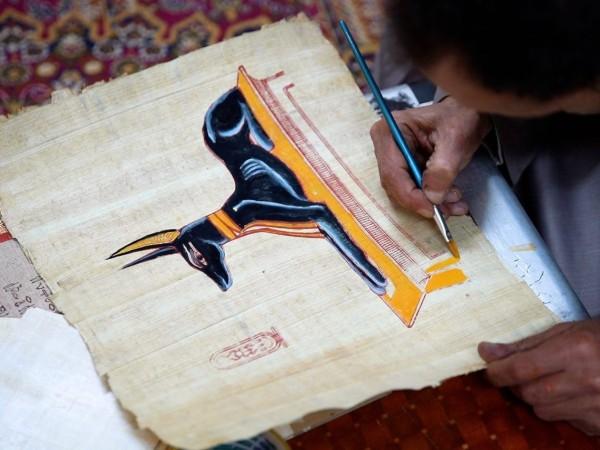
Shopping for Papyrus artworks - © Business Insider
Weather in Luxor: Best Time to Visit
Spring in Luxor
Spring in Luxor offers mild temperatures, around 15°C (59°F) to 30°C (86°F), with the added beauty of blooming flora. However, this season can experience occasional Khamsin winds, which bring dust storms from the desert. Despite this, spring remains a favorable time for travel, with moderate weather and a gradual increase in tourist numbers as the weather warms up. It's a great time to visit before the intense summer heat arrives.
Summer in Luxor
Summers in Luxor are extremely hot, with daytime temperatures often exceeding 40°C (104°F). Despite the intense heat, this season can be ideal for budget travelers, as it’s a low season with fewer tourists and discounted accommodation rates. However, visitors should be prepared for high temperatures by staying hydrated, wearing sunscreen, and scheduling outdoor activities in the early morning or late afternoon.
Autumn in Luxor
Autumn brings a welcome relief from the summer heat, with temperatures ranging between 25°C (77°F) and 35°C (95°F). This season is popular among tourists seeking pleasant weather for sightseeing and exploring Luxor’s historical sites. Autumn also marks the beginning of the tourist high season, leading to increased activity in hotels and attractions.
Winter in Luxor
Winter is the peak tourist season in Luxor, thanks to its mild temperatures, which range from 10°C (50°F) at night to 24°C (75°F) during the day. This is the most favorable time for outdoor activities, such as visiting temples, taking hot air balloon rides, and enjoying Nile cruises. The pleasant weather attracts a large number of tourists, making it the busiest and most expensive time of the year.
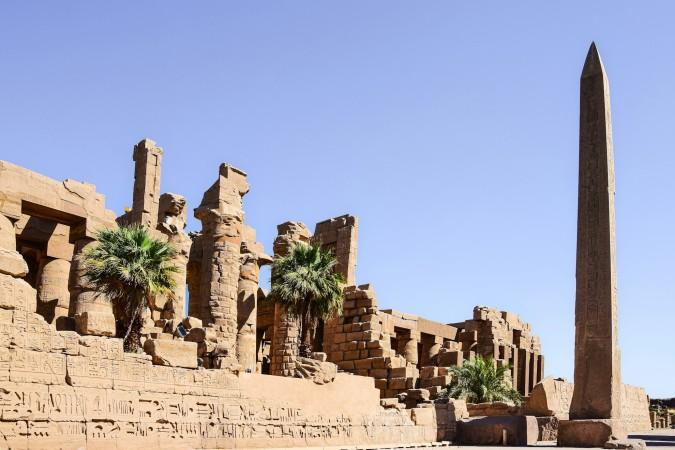
Explore Luxor Temple - © AXP Photography
Essential Travel Information
Getting Around Luxor
- Taxis: Taxis are readily available throughout Luxor. It’s a convenient and relatively inexpensive way to get around.
- Felucca Rides: For a scenic and traditional mode of transport, consider taking a felucca (a small sailing boat) on the Nile. Felucca rides are ideal for crossing the river between the East and West Banks or for a peaceful, sunset cruise.
- Calèche (Horse-drawn Carriages): Another popular way to explore Luxor’s streets is by taking a calèche. These horse-drawn carriages are commonly found in tourist areas and provide a unique, leisurely way to view the city. As with taxis, negotiate the price beforehand.
- Minibuses: Minibuses are shared taxis that locals frequently use to get around. They’re a budget-friendly option but may be more challenging for tourists unfamiliar with the routes and stops.
- Hot Air Balloon Rides: A hot air balloon ride over Luxor, especially over the West Bank and the Valley of the Kings, is a magical experience. While not a typical mode of transport, it’s a must-do activity for spectacular views of the ancient sites.
ATM & Banking Services
Luxor offers convenient access to ATMs and banking services, especially in tourist areas, hotels, and shopping centers. Most ATMs accept international cards like Visa and MasterCard, making it easy for travelers to withdraw Egyptian pounds. Currency exchange services are also widely available, and while many hotels, restaurants, and shops accept credit cards, carrying cash is advisable for smaller purchases and transactions in local markets.
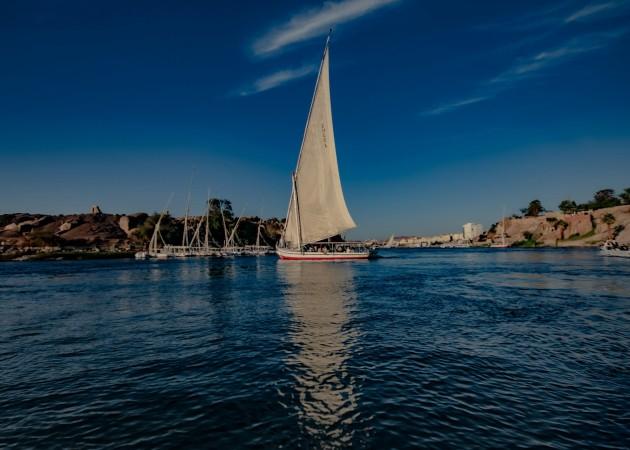
Nile River Cruises - © Michael Starkie
Where to Stay in Luxor
- Luxury Hotels: Luxor features several high-end hotels that provide top-notch amenities and stunning views, often overlooking the Nile. These luxury accommodations typically include fine dining, spas, and expansive swimming pools, ensuring a lavish and comfortable stay.
- Mid-Range Hotels: For those seeking comfort without splurging, mid-range hotels in Luxor offer a blend of quality and affordability. These establishments usually provide modern amenities such as air conditioning, complimentary Wi-Fi, and on-site dining options, making them ideal for a pleasant stay.
- Budget Lodgings: Backpackers and budget travelers will find a range of economical guesthouses and hostels, particularly on the West Bank. These options offer basic but clean rooms and a friendly atmosphere, catering to those looking for a more affordable place to stay.
- Nile Cruises: An unique accommodation choice in Luxor is staying on a Nile cruise ship. These floating hotels combine lodging with sightseeing, offering meals, guided tours, and entertainment as part of the package. Cruises vary from luxurious to more budget-friendly options, providing a distinctive way to experience the region.
- Homestays: For a more personal touch, some locals offer homestays where guests can stay in traditional homes and enjoy authentic Egyptian hospitality and meals. This option allows you a more in-depth cultural immersion as well as the opportunity to interact with locals.
Des articles pour vous

Voyage à Kampong Cham - Cambodge, Asie
Kampong Cham est une charmante ville riveraine située le long du fleuve Mékong. Connue pour son importance historique et ses attractions culturelles, Kampong Cham offre un mélange d'architecture coloniale, de temples anciens et de paysages pittoresques. Kampong Cham est reliée au district voisin de Tbong Khmum par le pont Kizuna, le premier pont au Cambodge à traverser le fleuve Mékong, en faisant un carrefour de transport crucial pour la région.
Population : Estimation de 80 000 habitants (en 2024)
Économie : Bien que n'étant pas encore une destination touristique majeure, Kampong Cham propose des sites culturels et historiques, tels que le temple Wat Nokor et le pont en bambou de Koh Pen, ainsi que des attractions naturelles comme des forêts et des chutes d'eau. Le gouvernement se concentre sur le développement du tourisme pour améliorer l'économie locale.
Points d'intérêt : Wat Nokor Bachey, Phnom Han Chey, Phnom Pros et Phnom Srey, pont en bambou de Koh Pen, Wat Joy T'maw, Preah Theat Teuk Chha, piste d'atterrissage abandonnée de l'US.

Explorez Nha Trang - Voyage au centre du Vietnam, Asie
Nichée le long de la magnifique côte du Vietnam, Nha Trang se distingue comme une destination de premier choix pour les voyageurs. Cette ville côtière, réputée pour ses superbes plages et sa vie marine foisonnante, s'adresse à tous. Nha Trang vous accueille à bras ouverts, que vous recherchiez des aventures, de la culture ou de la détente au bord de la mer. Ce guide vous fera découvrir les points forts de cet endroit magnifique, facilitant ainsi la planification de votre voyage de manière fluide et excitante.
Population : Environ 423 000 habitants en 2019.
Économie : L'un des principaux centres touristiques du Vietnam et la plus grande économie de la province de Khanh Hoa.
Sites emblématiques : Célèbre pour les tours Cham de Po Nagar, la cathédrale de Nha Trang et l'île Hon Mun.

Voyage à Sihanoukville - Cambodge, Asie
Sihanoukville, une ville côtière du sud-ouest du Cambodge, est la capitale de la province de Preah Sihanouk. Située sur une péninsule le long du golfe de Thaïlande, la ville est bien reliée à Phnom Penh par des autoroutes principales et dispose d'un aéroport international.
La ville abrite le seul port en eau profonde du Cambodge, jouant un rôle crucial dans la logistique et le commerce du pays. Les plages magnifiques de Sihanoukville, telles qu'Ochheuteal et Serendipity, attirent aussi bien les touristes nationaux qu'internationaux. Le développement économique a prospéré ces dernières années, en particulier grâce à la création de la Zone économique spéciale de Sihanoukville (SSEZ) et aux investissements chinois dans les casinos, l'immobilier et les stations balnéaires. La ville offre également des attractions naturelles telles que le parc national de Ream et plusieurs îles voisines, en faisant une destination variée pour les voyageurs d'affaires et de loisirs.
Population : La population de Sihanoukville était d'environ 160 000 habitants en 2024.
Économie : Sihanoukville, une ville côtière en pleine croissance au Cambodge, se distingue par son mélange dynamique de développement économique et de tourisme. La Zone économique spéciale de Sihanoukville (SSEZ) est devenue un pôle industriel majeur, abritant plus de 180 entreprises et créant des milliers d'emplois. Avec le seul port en eau profonde du Cambodge, la ville joue un rôle clé dans le commerce et la logistique du pays. Bien qu'elle se soit transformée d'une petite ville balnéaire tranquille en un centre urbain animé, Sihanoukville reste célèbre pour ses plages immaculées, attirant des touristes tout au long de l'année. Les investissements chinois importants ont alimenté la croissance des hôtels, des casinos et de l'immobilier, faisant de la ville un centre d'opportunités économiques et d'hospitalité.
Monuments : Plage d'Otres, Plage d'Ochheuteal, Plage de l'Indépendance, Parc national de Ream, Chute d'eau de Kbal Chhay, Monument des Lions d'Or, Wat Leu.

Explorez Kharkhorin - Voyage en Mongolie, Asie
Bienvenue à Kharkhorin, un trésor historique niché au cœur de la Mongolie. Ancienne capitale vibrante de l'Empire Mongol sous le légendaire Gengis Khan, Kharkhorin se dresse comme un témoignage de la riche culture et de l'histoire de la Mongolie. Cette ville antique possède une combinaison unique d'importance historique et de paysages époustouflants, en faisant une destination incontournable pour un voyage de rêve en Mongolie. En mettant le pied à Kharkhorin, vous ferez un saut dans le temps, à une époque de grands palais, de routes commerciales prospères et d'échanges culturels sans pareils. Que vous soyez intrigué par les ruines anciennes, désireux d'explorer les traditions locales ou simplement en quête d'une immersion dans la beauté naturelle de la Mongolie, Kharkhorin a quelque chose à offrir à chacun.
Population : Environ 1 000 habitants en 2020.
Économie : L'une des attractions touristiques les plus importantes de la Mongolie et l'ancienne capitale de l'Empire Mongol.
Monuments : Célèbre pour les Ruines de Kharkhorin, le Monastère d'Erdene Zuu, et la Vallée d'Orkhon, un site du patrimoine mondial de l'UNESCO.

Explore Luang Prabang - Laos Travel, Asia
Luang Prabang, nestled in northern Laos at the meeting point of the Mekong river and Nam Khan river, is a city celebrated for its rich cultural heritage and stunning natural beauty. Recognized as a UNESCO World Heritage Site in 1995, it boasts a unique blend of traditional Lao and French architecture that has been carefully preserved. Whether you're wandering through its ancient temples, admiring the local architecture, or soaking in the natural beauty of waterfalls and rivers, Luang Prabang offers something for everyone.
Population: Approximately 470,000 in 2020.
Economy: Luang Prabang's economy thrives on tourism, with its UNESCO status drawing visitors to its temples, natural wonders, and cultural experiences. Local crafts, hospitality, and small businesses also play vital roles, supporting the town's sustainable growth. Local crafts, hospitality, and small businesses also play vital roles, supporting the town's sustainable growth.
Landmarks: Famous for the Wat Xieng Thong, Royal Palace Museum (also known as Haw Kham), and Mount Phousi (Phou Si Hill).Luang Prabang, nestled in northern Laos at the meeting point of the Mekong river and Nam Khan river, is a city celebrated for its rich cultural heritage and stunning natural beauty. Recognized as a UNESCO World Heritage Site in 1995, it boasts a unique blend of traditional Lao and French architecture that has been carefully preserved. Whether you're wandering through its ancient temples, admiring the local architecture, or soaking in the natural beauty of waterfalls and rivers, Luang Prabang offers something for everyone.
Population: Approximately 470,000 in 2020.
Economy: Luang Prabang's economy thrives on tourism, with its UNESCO status drawing visitors to its temples, natural wonders, and cultural experiences. Local crafts, hospitality, and small businesses also play vital roles, supporting the town's sustainable growth. Local crafts, hospitality, and small businesses also play vital roles, supporting the town's sustainable growth.
Landmarks: Famous for the Wat Xieng Thong, Royal Palace Museum (also known as Haw Kham), and Mount Phousi (Phou Si Hill).

Explore Vientiane - Laos Travel, Asia
Vientiane, the capital of Laos, offers a unique travel experience for those looking to explore a peaceful Southeast Asian city with a deep connection to its cultural roots. Unlike other bustling capitals, Vientiane boasts a serene and laid-back atmosphere, making it a perfect destination for travelers wanting to escape the chaos of more crowded cities. This charming city sits along the Mekong River, offering scenic views, rich history, and a vibrant yet tranquil way of life. As a gateway to exploring Laos, this capital invites you to slow down, immerse in its heritage, and enjoy the local flavors.
Population: Approximately 840,000 in 2023.
Economy: Vientiane's economy is growing steadily, driven by government services, trade, and tourism. Key sectors include agriculture, manufacturing, and construction. The city's strategic location along the Mekong River supports trade with neighboring Thailand and Vietnam.
Landmarks: Famous for the Pha That Luang, Patuxai, and the Buddha Park (or Wat Xieng Khuan).
